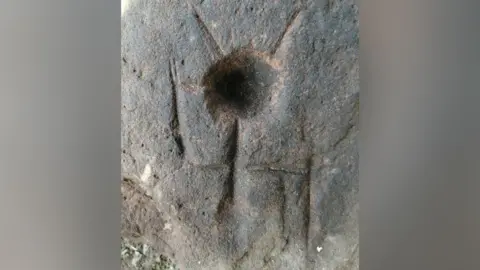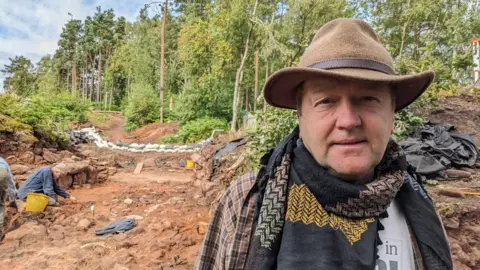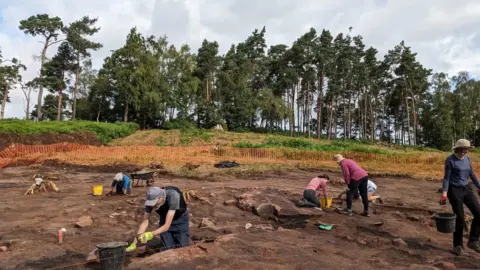Archaeologists revisit mysterious carving site on Shropshire hill
 Shropshire Council
Shropshire CouncilArchaeologists have returned to dig on a hillside where they previously unearthed an unusual sandstone carving.
Named the Nessglyph, the discovery was made in January at Nesscliffe hill, near Shrewsbury, Shropshire.
The council-managed site contains remains of an Iron Age hillfort, which was later occupied by the Romans.
The stone carving, which has circular and straight lines carved into it, was discovered by archaeologists Dr Paul Reilly and Gary Lock.

Dr Reilly, a visiting fellow at the University of Southampton, said it was "extremely rare" to find cut marks in carvings in Britain.
"That was terribly exciting for us," he said, speaking about the previous find. "But then we started looking at what did it mean?"

The discovery attracted attention from experts in countries such as Australia, Brazil and Japan, after teams appealed for help to identify it.
"We literally were getting two dozen emails every day for nearly four months, from all around the world," Dr Reilly added.
He told BBC Radio Shropshire he believed the carving, which contains a figure with four horns, had possibly represented a "deity" dating back to the Pagan movement.
The excavation site is set to open to the public on Sunday, between 10:00 and 16:00 BST.

Follow BBC West Midlands on Facebook, Twitter and Instagram. Send your story ideas to: [email protected]
